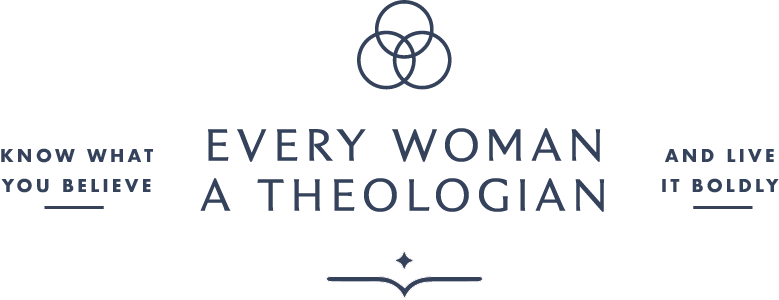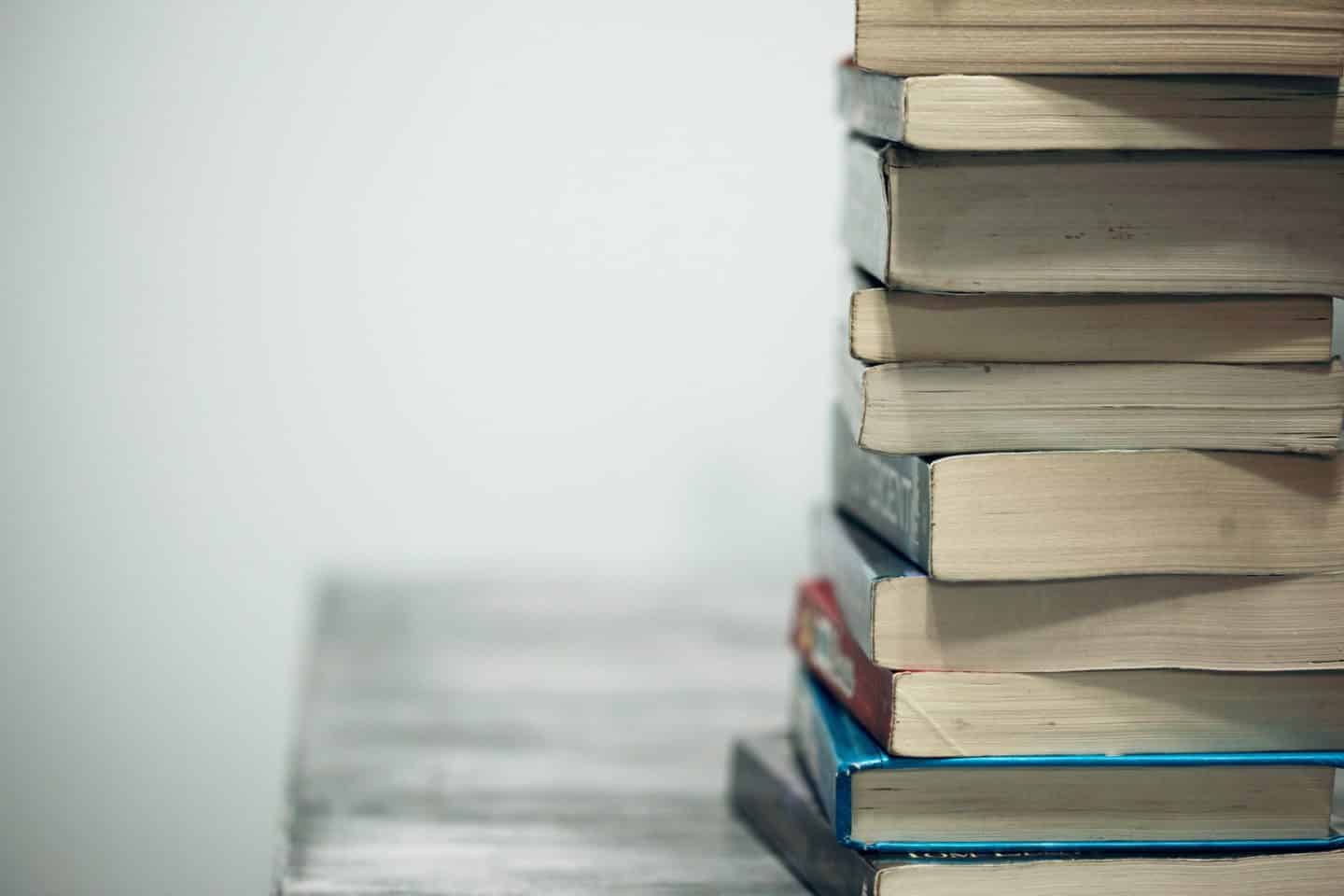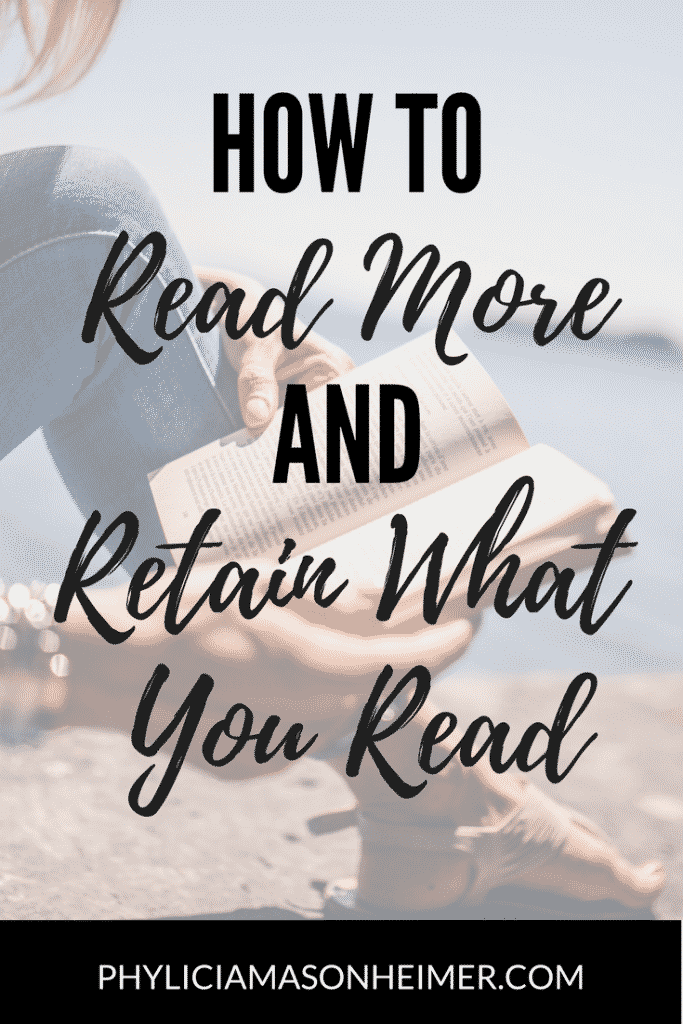I’m often asked how I read so much. I’ve shared my tips for adding more reading to your life on the blog before (along with my book lists)! But I’m also asked how I retain what I’m reading – especially since I read four to five books at once. Today I’ll share all my favorite tips for reading more and retaining what you read so you can use it in daily life!
Reading retention might be something you forgot about after high school and college, but it’s still a much-needed practice for our lives today.
This post contains affiliate links.
Take Notes
In my productivity course I encourage people to handwrite their lists and use physical planners. Why not use Trello, or better yet, your phone? While these electronic formats are convenient, they don’t register in our brains the same way handwriting does. This article from NPR shares an example from the academic world:
When people type their notes, they have this tendency to try to take verbatim notes and write down as much of the lecture as they can,” Mueller tells NPR’s Rachel Martin. “The students who were taking longhand notes in our studies were forced to be more selective — because you can’t write as fast as you can type. And that extra processing of the material that they were doing benefited them.” (Source)
When we take notes by hand, we’re forced to be more selective in what we “keep” in our minds. As you read, you’re actively choosing what is most important to remember. This is takes more time and effort than simply highlighting something on your Kindle, and it engages your brain more – which boosts retention.
As a college counselor for five years I repeatedly saw this prove true. And as someone who makes a living from consuming, retaining, and repackaging information in an understandable format for my audience, I can attest to the benefits of handwritten notes.
How do you take notes on nonfiction reading, particularly with library books? With my own books, I highlight, dog-ear, and write notes in the margins. I love to open a book and see its pages adorned with notes and thoughts from previous readings, questions I need to answer with outside sources, and points to remember for my own writing. In library books, I keep a separate, blank notebook for recording all these thoughts. Some people use Post-It notes and remove them from the book before returning them; this seems inconvenient to me, since the I wouldn’t have a good way to store sticky notes when the book was returned.
Learn to Speed Read
Another way to retain what you’re reading is to learn to skim, or “speed read”. As a homeschool student, reading was a huge part of my education. We read hundreds – even thousands – of books between middle and high school. I learned to read quickly by first, memorizing words themselves – I didn’t need to sound them out each time I saw them. Then I started reading the first and last sentence of each paragraph, only re-reading the whole thing if I didn’t grasp what was being articulated.
Only later did I learn this is a method taught to college students to aid in retention. The first and last sentence of each paragraph typically 1) introduces the concept to come and 2) summarizes the concept and introduces the next one. By reading these two sentences, you can quickly assess what the author is saying in that section of text. For further clarification, read the whole paragraph. But if you grasp the concept based on those two sentences, move to the next paragraph.
I do this with all the nonfiction books I read, taking notes as I go.
My husband, Josh, is not a fast reader like myself. When we married he started teaching himself to read faster with the app Acceleread. This app uses games to increase retention and help you identify words quickly, rather than reading each word aloud in your head.
Lastly, the more you read and the better quality the books you’re consuming, the wider your vocabulary. This will help you read faster, because you won’t need to stop for each word you can’t pronounce or don’t understand.
Summarize Each Chapter to Yourself
Consider this a mini-exam you give yourself after each chapter. Ask yourself:
- What was this chapter about?
- What are the three main concepts/three things that stood out to me?
- How could I apply this chapter?
By summarizing the content, you’re once again engaging your mind with what you read. You’re also cementing those concepts in reality by connecting them to actionable steps. For self-improvement or other practical nonfiction, this is especially important. For biographies and memoirs, you might ask:
- What did I learn about the author through this chapter?
- What three things stood out about his experience/life?
- How does what he learned/experienced interact with my own experience?
Find Your Reading Style
Not everyone reads the same way. I’m a nerd and love to read about reading – a book I’m currently working through is Reading Like a Writer by Francine Prose (get it here). And because I’m intensely practical, I view every book I read as a contributor to my writing career; useful information I can integrate into blog posts, podcast episodes, and Instagram stories. I’m not afraid to stop reading a book if it’s not helpful or I can’t mentally engage with the content. My reading style is all about efficiency; when I read efficiently, I enjoy it!
Others read in a much more leisurely fashion. You might read one book at a time instead of my five. It’s not important to copy someone else’s reading style; it’s important to identify your own. When you know what works for your own mind, you will effectively retain the information consumed.
For an exclusive look at the books I’m reading, join my newsletter community by signing up in the box below. I send out a newsletter every Monday and share my favorite tips, latest articles, and book lists!


